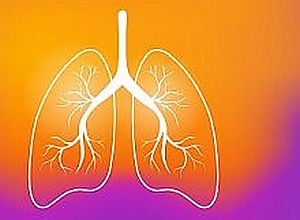A subcommittee of the American Thoracic Society Assembly in Sleep and Respiratory Neurobiology has released new clinical practice guidelines to help advise clinicians on the optimal management of patients with chronic obstructive pulmonary disease (COPD) and chronic hypercapnia, the build-up of carbon dioxide in the bloodstream.
The committee, comprised of leading clinicians working in pulmonary and critical care medicine, as well as patient representatives, developed a consensus approach and summarised evidence for addressing five PICO (patients, intervention, comparator, outcome) questions related to non-invasive ventilation (NIV) for chronic hypercapnic COPD. Recommendations were formulated by the panel of pulmonary and sleep physicians, respiratory therapists and methodologists using the Evidence-to-Decision framework, a systematic and transparent approach to groups making well-informed health care recommendations.
While NIV is used for patients with COPD and chronic hypercapnia, up to this point, evidence for clinical efficacy and optimal management of therapy have been limited.
“This guideline is needed because patients with severe COPD are very sick and have few therapies that have been shown to improve outcomes,” said guideline chair Dr Robert L Owens, associate professor, division of pulmonary, critical care and sleep medicine, University of California-San Diego. “Clinicians who care for these patients need information about whether to consider non-invasive ventilation and some practical advice on how to set up patients with NIV.”
The group’s main recommendations are to:
use nocturnal NIV in addition to usual care of patients with chronic stable hypercapnic COPD; have patients with chronic stable hypercapnic COPD undergo screening for obstructive sleep apnoea (OSA) before initiation of long-term NIV; avoid initiating long-term NIV during admission for acute-on-chronic hypercapnic respiratory failure, favouring instead reassessment for NIV at 2-4 weeks after resolution; avoid the use of in-laboratory overnight polysomnography (PSG) to titrate NIV in patients with chronic stable hypercapnic COPD who are initiating NIV, and use NIV with targeted normalization of PaCO2 in hypercapnic COPD patients on long-term NIV.
To develop each of the recommendations, the panel reviewed results from numerous randomised clinical trials, and looked at such factors as health equity and availability of pulmonary and critical care specialists in medically underserved areas, as well as the likelihood of patient compliance.
Because some or all of these issues may impact each of the recommendations, all recommendations were considered conditional. The group outlined unanswered questions for each recommendation, as well as future research directions. They also examined what other specialty organizations were saying on these issues.
“It is exciting to consider NIV as additional therapy for those with hypercapnic COPD,” the authors stated. “However, there are many issues to consider.”
Among these issues are: appropriate patient selection; implementation barriers; the need for more data to guide the goals of therapy, especially on how clinicians should target PaCO2; addressing regulatory/payor considerations on the ability to obtain home NIV for COPD: and the potential for worsening health care disparities due to the cost and expertise needed to provide NIV for patients with stable hypercapnic COPD.
Owens concluded, “This guideline is needed now because studies in the last few years have shown improved outcomes with non-invasive ventilation for patients with severe COPD.
The guideline incorporates recent studies, while also highlighting priority areas for research.”
Abstract
Background: Noninvasive ventilation (NIV) is used for patients with chronic obstructive pulmonary disease (COPD) and chronic hypercapnia. However, evidence for clinical efficacy and optimal management of therapy is limited.
Target Audience: Patients with COPD, clinicians who care for them, and policy makers.
Methods: We summarized evidence addressing five PICO (patients, intervention, comparator, and outcome) questions. The GRADE (Grading of Recommendations, Assessment, Development, and Evaluation) approach was used to evaluate the certainty in evidence and generate actionable recommendations. Recommendations were formulated by a panel of pulmonary and sleep physicians, respiratory therapists, and methodologists using the Evidence-to-Decision framework.
Recommendations: 1) We suggest the use of nocturnal NIV in addition to usual care for patients with chronic stable hypercapnic COPD (conditional recommendation, moderate certainty); 2) we suggest that patients with chronic stable hypercapnic COPD undergo screening for obstructive sleep apnea before initiation of long-term NIV (conditional recommendation, very low certainty); 3) we suggest not initiating long-term NIV during an admission for acute-on-chronic hypercapnic respiratory failure, favoring instead reassessment for NIV at 2–4 weeks after resolution (conditional recommendation, low certainty); 4) we suggest not using an in-laboratory overnight polysomnogram to titrate NIV in patients with chronic stable hypercapnic COPD who are initiating NIV (conditional recommendation, very low certainty); and 5) we suggest NIV with targeted normalization of PaCO2 in patients with hypercapnic COPD on long-term NIV (conditional recommendation, low certainty).
Conclusions: This expert panel provides evidence-based recommendations addressing the use of NIV in patients with COPD and chronic stable hypercapnic respiratory failure.
Authors
Madalina Macrea, Simon Oczkowski, Bram Rochwerg, Richard D Branson, Bartolome Celli, John M Coleman III, Dean R Hess, Shandra Lee Knight, Jill A Ohar, Jeremy E Orr, Amanda J Piper, Naresh M Punjabi, Shilpa Rahangdale, Peter J Wijkstra, Susie Yim-Yeh, M Bradley Drummond, Robert L Owens
[link url="https://www.thoracic.org/about/newsroom/press-releases/journal/2020/new-clinical-practice-guidelines-on-non-invasive-ventilation-in-chronic-stable-hypercapnic-copd.php"]American Thoracic Society material[/link]
[link url="https://www.atsjournals.org/doi/full/10.1164/rccm.202006-2382ST"]Guidelines abstract[/link]

